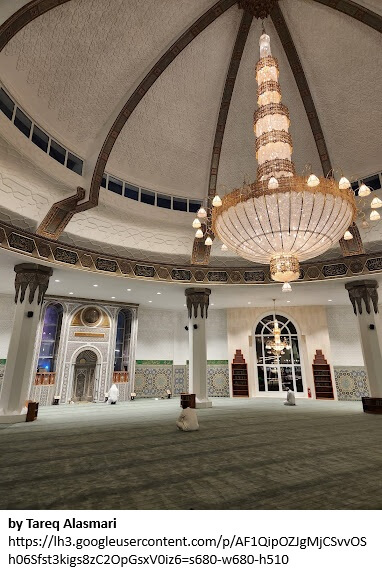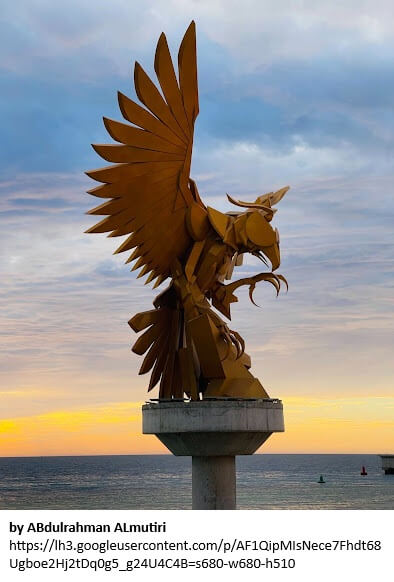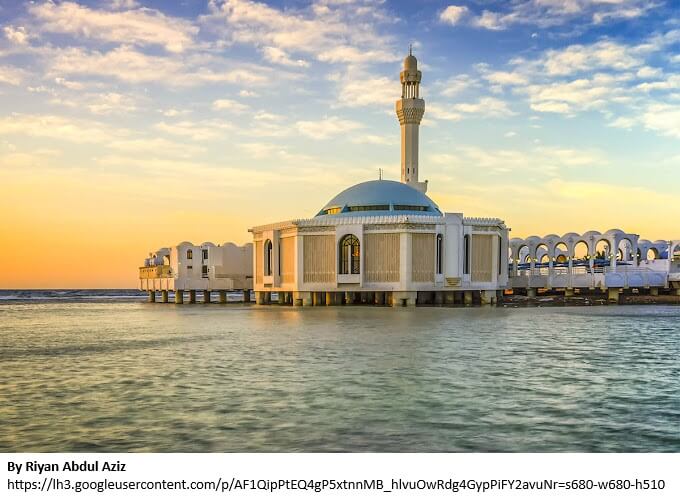Table of Contents
The Al-Rahmah Mosque, also popularly referred to as the “Floating Mosque,” stands as a remarkable fusion of modern architectural brilliance and profound Islamic spirituality. Situated along the Red Sea coast in Jeddah, Saudi Arabia, the mosque is an iconic landmark that draws countless visitors, pilgrims, and worshippers every year. Its unique design, serene location, and cultural significance make it a place of both reverence and aesthetic admiration.
A Unique Location and Design
The Al-Rahmah Mosque is perched on stilts over the azure waters of the Red Sea, creating the illusion of a floating structure during high tide. This distinctive positioning is a metaphorical reflection of spiritual elevation and the pursuit of divine connection. The mosque’s design incorporates traditional Islamic architectural elements such as domes and minarets while embracing modern construction techniques and materials.
The structure is primarily constructed from reinforced concrete, ensuring durability against the saline and humid coastal environment. Its large central dome, painted in serene hues, is supported by intricately designed pillars, and smaller domes adorn the surrounding spaces. The mosque’s open courtyards and expansive prayer halls provide a sense of openness and tranquility, enhanced by the gentle sound of waves lapping against its base.
Architectural Highlights
- The Dome and Minaret: The central dome of Al-Rahmah Mosque is not just a structural feature but also a symbol of unity and harmony in Islamic culture. The minaret, rising gracefully from the mosque, serves both a functional and symbolic purpose. It is equipped with modern sound systems to broadcast the call to prayer (adhan), reaching worshippers in the vicinity and enhancing the spiritual ambiance.
- Interior Design: Inside, the mosque is adorned with intricate Islamic calligraphy and geometric patterns. The walls feature verses from the Quran, beautifully inscribed in Arabic, adding to the sacred atmosphere. The prayer area is spacious, with plush carpets that offer comfort to worshippers during their prayers.
- Lighting and Ambiance: A standout feature is the use of natural light. The mosque’s large windows and strategically placed openings allow sunlight to filter in, illuminating the interiors with a divine glow. During the evening, strategically placed lighting fixtures cast a soft glow on the mosque’s exterior, making it appear ethereal against the backdrop of the night sky and sea.

Historical and Cultural Significance
The Al-Rahmah Mosque, built in 1985, serves as a beacon of faith for Muslims in Jeddah and beyond. While relatively modern, its design pays homage to centuries of Islamic architectural traditions. It is a popular site for both locals and tourists, serving as a tranquil retreat for reflection and worship.
Its proximity to Jeddah’s Corniche, a scenic coastal promenade, makes it easily accessible to visitors. Many pilgrims en route to Mecca for Hajj or Umrah make a stop at the mosque, drawn by its unique location and spiritual significance. For residents, it is a beloved space for daily prayers, Quranic studies, and community gatherings.
Spiritual Experience
Visiting the Al-Rahmah Mosque offers more than just visual and architectural appeal; it provides a deeply spiritual experience. The sound of the adhan, amplified over the waters, creates a serene and meditative environment. Worshippers often describe a profound sense of peace while praying within the mosque, with the sound of waves serving as a natural backdrop.
Non-Muslim visitors, though not permitted inside the prayer halls, are welcomed to admire the mosque’s exteriors and enjoy the surrounding area. Guided tours often provide insights into the mosque’s design, cultural relevance, and the principles of Islamic faith and prayer practices.
A Place of Community and Education
Beyond its role as a place of worship, Al-Rahmah Mosque serves as a hub for community activities and religious education. It regularly hosts Quranic recitation sessions, religious lectures, and discussions, fostering a sense of unity among its attendees. The mosque’s inclusive environment ensures that people from various walks of life feel welcome.
Environmental Integration
The mosque’s coastal location is not only visually stunning but also emphasizes the importance of environmental integration. The designers ensured that the structure harmonizes with its surroundings, minimizing its ecological footprint. The stilted construction allows marine life to thrive beneath the mosque, symbolizing coexistence and respect for nature.
Tourism and Accessibility
As one of Jeddah’s most photographed landmarks, the Al-Rahmah Mosque is a must-visit destination for tourists. Its location along the Corniche makes it part of a larger experience that includes parks, cafes, and art installations. Visitors can stroll along the promenade, enjoying the scenic beauty of the coastline, before reaching the mosque.
For those visiting during prayer times, the sight of worshippers gathered in harmony is a moving experience, showcasing the mosque’s role as a spiritual and communal center. Ample parking facilities and proximity to major roads ensure accessibility, while the well-maintained pathways and ramps cater to individuals with disabilities.
Symbolism and Legacy
The Al-Rahmah Mosque embodies the principles of Islamic faith: unity, peace, and submission to the divine. Its design reflects the balance between tradition and modernity, serving as a bridge between the past and the future. As a floating structure, it symbolizes spiritual elevation and humanity’s connection to the divine.
Over the years, the mosque has become more than just a place of worship; it is a symbol of Jeddah’s rich cultural heritage and progressive outlook. Its timeless beauty and spiritual significance ensure that it remains an enduring legacy for generations to come.

The Al-Rahmah Mosque is a masterpiece of Islamic architecture, a spiritual haven, and a cultural landmark that captivates all who visit. Whether viewed as a place of worship, an architectural marvel, or a serene retreat, it leaves an indelible impression on the hearts and minds of its visitors. Perched gracefully over the Red Sea, it is a testament to the harmonious blend of faith, art, and nature.

Leave a Reply